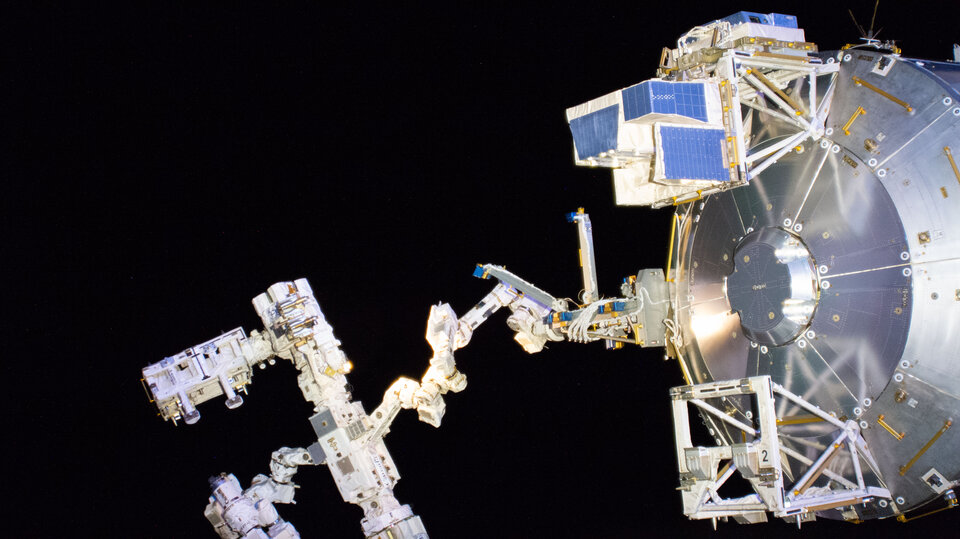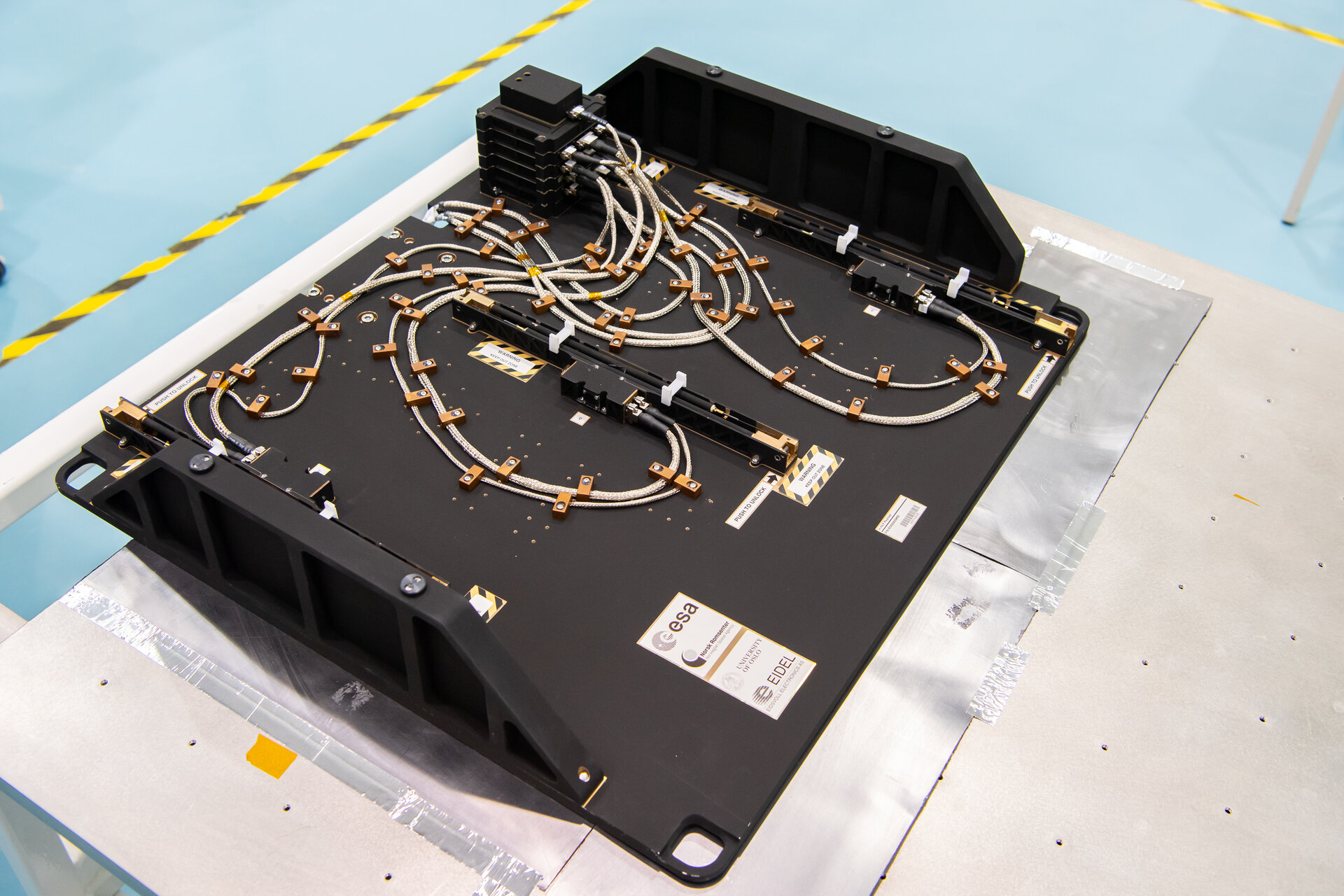Probe the space weather around Earth
Launching soon on one of the next cargo missions to the International Space Station is the Multi-Needle Langmuir Probe that will measure the “weather” in the upper atmosphere. The experiment is part of ESA astronaut Andreas Mogensen’s Huginn mission climate science.
Space weather
Understanding the weather in space is just as important as understanding the weather on Earth as we become a space-faring species. While it does not rain or snow in space, other phenomena occur called space weather. The Sun sends out charged particles that interact with Earth’s magnetic field, creating beautiful auroras but also disturbing satellites in orbit around our planet.
The Multi-Needle Langmuir Probe will measure the density of charged particles around Earth down to a metre-scale, a precision never achieved before. Six probes will collect measurements up to 5000 times a second.
With such a fine scale, scientists hope to understand where and to what extent radio signals from satellites are disrupted as they pass through Earth’s atmosphere. The data will help make forecasts for the integrity and availability of navigation and positioning satellites such as Galileo. As the interferences change over time, a fleet of satellites equipped with these probes could give an improved space weather forecast.
Bartolomeo

The Multi-Needle Langmuir Probe will be installed on the Bartolomeo platform, located outside the Columbus module on the International Space Station. Named after Christopher Columbus’s younger brother, the platform became operational during ESA astronaut Matthias Maurer’s spacewalk in March 2022, when he connected the final power and data cables on the platform.
As the hardware arrives at the International Space Station a few weeks before the Huginn mission, ESA astronaut Andreas Mogensen will most likely be the one to unpack it and install it on the new Bartolomeo platform. The experiment will be placed in the Japanese airlock and the Space Station’s robotic arm will move and install it on Bartolomeo.
Bartolomeo is made by Airbus and can host experiments as large as a dishwasher. Experiments will have a view of Earth or space depending on their orientation, with some locations on the platform also having a clear view in the direction of travel of the Space Station. Each experiment will have power and data connections.
The Multi-Needle Langmuir Probe experiment is made by the University of Oslo, Norway, and Eidsvoll Electronics from Norway, and supported by ESA through the GSTP programme, for promising spaceflight concepts.
Rocket and space tested
A version of the experiment flew on nine sounding rockets from 2008 to 2019 up to an altitude of 1040 kilometres, in Norway and Alaska, USA, demonstrating the capabilities of the technology and readying it to fly on a stand-alone mission.
In 2017, the satellite Norsat-1 from the Norwegian Space Centre, was launched into a sun-synchronous orbit with the satellite flying over our North and South Poles. It hosted a simpler version of the probe and collected data for over five years, providing more information for the scientists about the space weather in the upper parts of Earth’s atmosphere.
The version on the International Space Station will allow the scientist to gather more data for next three years on the Bartolomeo platform, in a different orbit and leading the way for future projects with a constellation of satellites monitoring space weather.
Visit the Huginn page for more news on Andreas’s mission.


